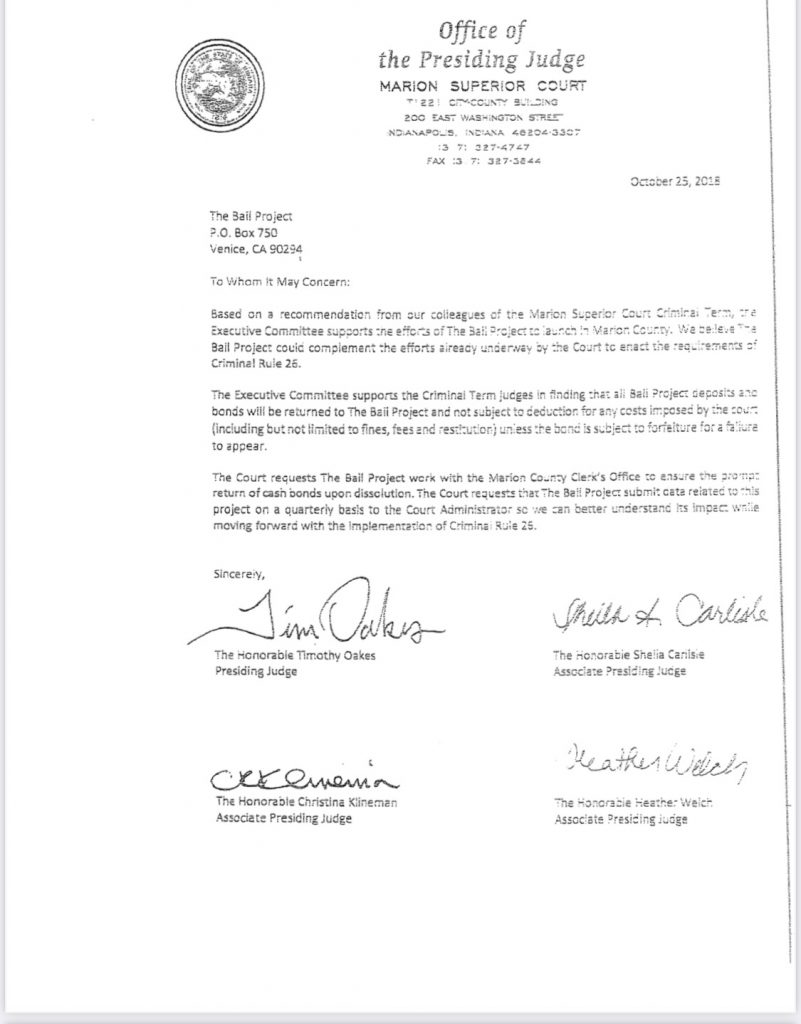When asked how she would describe Marion County’s Bail and Bond System, Presiding Judge Amy Jones says, “it’s extremely complicated.”
In the wake of record murders in Marion County, Indy Politics is taking a look at the bail and bond system here in the Capital City, a significant number of those murders were committed by individuals who were on pre-trial release, and at least three of those suspects were out after their bail was reduced and then it was posted by the not-for-profit group, The Bail Project”*
The Bail System
First of all, whether bail is an option depends on what the individual was arrested for. “There are basically two pathways an arrestee can take A person is arrested for a Level 5, 4, 3, 2, or 1 felony, and that person goes in one direction. The only time an individual will not get bond is if they are arrested for murder or treason,” noted Judge Jones. “A person brought in on a misdemeanor or a Level 6 felony takes a different pathway. Whatever the highest level arresting charge was, that is where the bond is set.”
So what exactly is this “bail matrix,” and how is it used to determine who stays and who gets to leave? In English, a matrix is a guide that judges use to decide which bond should be set. In other words, it’s a risk assessment system. The Indiana Supreme Court set down the order, and every county has one. Jones says Marion County is in the middle when compared to other counties. The top three things that the Courts ask when it comes to low-level offenders are, “are you charged with murder or treason, are they out on pre-trial release for something other than this offense, are they out on probation or parole? If they are, then the process stops, and the defendant goes before a judge,” she stated. Then they also review any past criminal histories and failures to appear.
How does our bail system explain three recent events where the defendants who were out on bail committed violent offenses, including murder and assault? The first thing that Jones says the public has to do is listen to the transcripts of the hearings. “Bonds do get reduced for various reasons, “Jones said. “It’s one thing to read our chronological case study, which is just a quick blurb. It’s another thing to sit through an hour hearing, and you get to listen to what the Judge heard and understand their decision-making process.” The judges will have laid down very well their rationale for the factors considered, Jones stated. “We can’t predict human behavior; the best we can do is take the information we have and make the best possible decision.”
The Bail Project
We asked Judge Jones directly if the Marion County Court system had entered into an agreement with the not-for-profit group “The Bail Project.” She told us that was another misconception. “There’s no contract nor MOU with the Bail Project.” There is an understanding that should the Bail Project post bail for an indignant defendant; they will get their bail refunded, which is the same thing that would happen if the individual had posted bail.”
However, Jones also says the Bail Project was supposed to present quarterly reports to the Court system to see if they are meeting the deliverables.
According to the most recent report, The Bail Project in Indianapolis posted bail for 941 clients in 1122 cases. The median amount deposited for bail was $1,5000, and the average amount for ail was $2,130. Also, according to the report, 62 percent of the clients The Bail Project served were Black, and 78 percent were male, and 95 percent made their court dates. And of the 572 clients whose cases reached full disposition, 85 percent served no additional jail time, and 21 percent were either found not guilty or had their cases dismissed at trial.
Judge Jones indicated to Indy Politics she had some major concerns about the Bail Project despite those reported results. “2019 was the last time we got a report with data on the Bail Project on how things were working,” Jones noted. “Are they delivering? I don’t know. We hear things anecdotally.”
In addition, the Judge also expressed concerns that the Bail Project was taking on higher-level offenses than what the Judges were initially told they would do. “The data shows they’ve started posting bonds on higher, more violent type cases than the original low-level felonies and misdemeanors. We’ve had some significant tragedies pop up lately, so we’re re-evaluating.”
*Note, due to judicial rules, Judge Jones could not speak to the particulars of individual cases.















